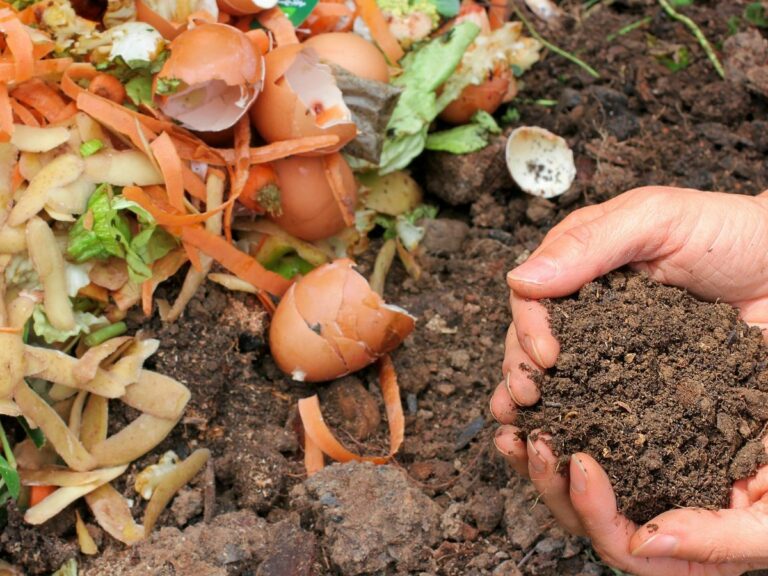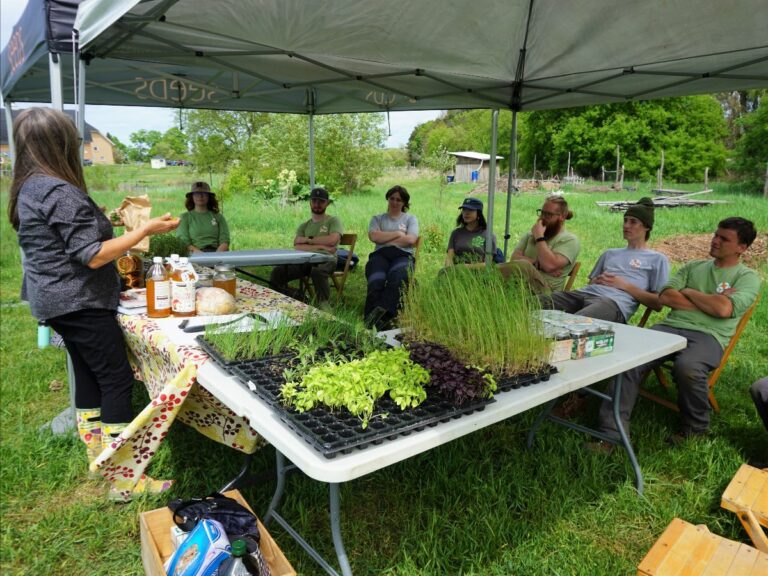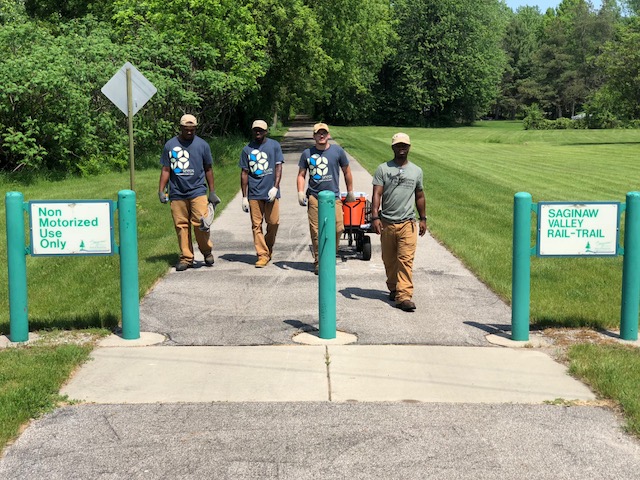When it comes to heating our homes, most of us want the same things: warmth, comfort, and a system that doesn’t cost the Earth—literally. That’s where masonry heaters come in and why we felt it was crucial to include one in our SEEDS Workshop construction plans. Masonry heaters are timeless, ultra-efficient stoves that are not just cozy, they’re an efficient, low carbon alternative to other heating equipment – including traditional wood stoves.
For two-and-a-half of the coldest Northern Michigan winter months, SEEDS EcoCorps crewmembers and Bungalow Builders worked hard to construct the intricate internal parts and external facade of a new masonry heater inside of the SEEDS Workshop located in Historic Barns Park.
Burn Once, Stay Warm All Day
Masonry heaters are built to burn hot and fast—just once or twice a day. You load it up, light it, and let it go. Inside the heater, temperatures reach 1500–2000°F, allowing the fire to burn clean and completely while leaving behind very little smoke or unburned waste. That quick, intense fire heats a maze of internal brick channels, which absorb and store the heat. These bricks then slowly release warmth over the course of 12 to 24 hours, warming the space evenly and efficiently.


Radiant Heat That Warms You, Not Just the Air
Instead of using fire to heat the air (which quickly escapes), masonry heaters radiate heat directly into the room, warming people and objects providing a cozy, deep warmth that feels like it works from the inside out.
Because the heat is stored in the thermal mass of the bricks, it radiates at a safe, steady rate. That means no hot surfaces or unpredictable temperature spikes. It’s safe for kids, pets, and even provides a toasty bench seat on cold days.


Clean Air, Inside and Out
Wood smoke is one of the biggest sources of wintertime air pollution. Filled with fine particles and harmful chemicals like benzene and formaldehyde, these pollutants aren’t just bad for the environment, they negatively affect human health. Masonry heaters dramatically reduce harmful emissions thanks to near-total combustion. They’re designed to burn clean and leave behind less soot, which also means less creosote buildup in the chimney and lower risk of fire.
SEEDS and EcoCorps crews also considered the environmental impact along every step of the construction process. This led us also to specify reused concrete slabs, repurposed bricks, and utilizing local zebra mussel shells ground to a fine powder as a support aggregate material.
SEEDS EcoCorps is proud that—with the exception of the match to light it—the masonry heater is burning wood that has exclusively been rescued from local felled trees and storm debris. Fueling the heater is part of the SEEDS Wood Shop’s materials management plan, using ends and scraps for heat.


Designed by History, Perfect for the Present
Masonry heaters aren’t a new trend—they’re a time-tested solution. During the “Little Ice Age” (1550–1850), colder winters and dwindling wood supplies pushed communities across Europe to rethink home heating. The result? A wave of innovative, wood-saving stove designs that eventually became the masonry heaters we know and love today.
Today, this technology is more relevant than ever. As we face our own climate challenges, turning to efficient, low-impact technologies like masonry heaters can be part of the solution—cutting down on waste, reducing emissions, and reconnecting us with the natural rhythms of warmth and fire.
Want to learn more?
A masonry heater is more than a heating system—it’s a conscious lifestyle choice. One that brings comfort, sustainability, and timeless design into your everyday life.



Additional Resources:
- Masonry Heater Association – https://www.mha-net.org/
- Alliance For Green Heat – https://www.forgreenheat.org/masonry-stoves
- The Book of Masonry Stoves – Rediscovering an Old Way of Warming. David Lyle.
- Bungalow Builders – https://bungalowbuilders.org/





